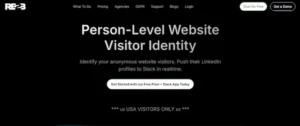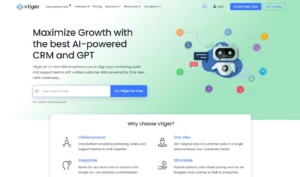The Ultimate Guide To Collecting And Using User Feedback For Lead Generation

Lead generation is like planting seeds of opportunity. It’s the lifeblood that fuels your business’s success, opening doors to new customers, revenue streams, and expansion.
But here’s the catch: lead generation isn’t a walk in the park. It requires strategy, innovation, and a deep understanding of your target audience. You need to know what makes them tick, what problems they’re desperate to solve, and how to capture their attention in a crowded marketplace. That’s where the power of user feedback comes into play.
92% of consumers trust recommendations from friends and family over any other form of advertising. This staggering statistic highlights the power of user feedback in influencing purchasing decisions. When potential customers hear positive feedback from real people, it carries far more weight than any marketing message or flashy advertisement.
So, revolutionise how you attract and nurture leads, paving the way for a future filled with boundless possibilities. Let’s start discovering the power of user feedback for improved lead generation.
Understanding the Power of User Feedback
User feedback is a game-changer for maximising lead generation. It encompasses the information, opinions, and insights shared by individuals interacting with your product, service, or brand. By actively embracing user feedback, you gain a direct line to your customers’ thoughts and desires, unlocking the potential for significant business growth.
There are two types of user feedback, namely:
- Direct Feedback: This includes surveys, feedback forms, and customer interviews. Surveys help uncover customer preferences, pain points, and opinions. Feedback forms provide a platform for specific feedback and ratings. Customer interviews offer qualitative insights into experiences, pain points, and suggestions.
- Indirect Feedback: This type involves monitoring user behaviour data, social media conversations, and online reviews. User behaviour data provides insights into user preferences and optimisation opportunities. Social media monitoring reveals opinions, expectations, and pain points. Online reviews offer valuable feedback on your products or services.
But How Can You Effectively Collect User Feedback?
Now that we have discussed user feedback, the remaining problem is how it can improve our lead-generation efforts. Well, here are some of the methods we have gathered:
Implementing Effective Feedback Collection Methods
To harness the power of user feedback for improved lead generation, it’s essential to employ effective methods that capture valuable insights from your customers. Let’s explore some actionable techniques for collecting user feedback:
Craft Targeted Surveys and Feedback Forms
Surveys and feedback forms are go-to tools for gathering quantitative data and specific feedback from your user base. When designing surveys and forms, ensure they are concise, easy to understand, and tailored to extract the necessary information.
By asking relevant questions, you can gather insights into customer preferences, pain points, and suggestions for improvement. Here’s how you can do that:
- Clearly define the objective of your survey or feedback form. Determine the specific insights you want to gather from customers.
- Keep the survey or form concise and easy to understand. Use clear and straightforward language to ensure respondents can provide accurate feedback.
- Tailor your questions to gather both qualitative and quantitative data. Mix open-ended questions to encourage detailed responses and closed-ended questions for easy analysis.
Conduct Customer Interviews And Focus Groups
Customer interviews and focus groups provide an opportunity for in-depth qualitative feedback. Engaging in one-on-one conversations or group discussions allows you to delve deeper into customers’ experiences, uncover nuanced insights, and understand their motivations. These methods allow for open-ended discussions, allowing you to explore customer perspectives in greater detail.
- Identify your target audience and select participants who represent diverse customer segments. This ensures you capture a wide range of perspectives.
- Prepare a structured interview or focus group guide to ensure the questions’ consistency. This allows for meaningful comparisons and analysis.
- Actively listen and engage with participants during interviews or focus groups. Encourage them to share their experiences, thoughts, and suggestions freely.
Leverage Sentiment Analysis And Social Listening Tools
Social media platforms and online reviews are gold mines for user feedback. Sentiment analysis and social listening tools can help you tap into the vast data available.
Sentiment analysis analyses social media posts or reviews to gauge positive, negative, or neutral sentiments associated with your brand. Social listening tools monitor online conversations related to your industry, allowing you to identify trends, address customer concerns, and gather valuable feedback.
- Choose a reliable sentiment analysis tool to analyse social media posts and online reviews effectively. Look for features that provide sentiment scores and keyword analysis.
- Set up real-time monitoring of social media conversations related to your brand or industry. Use social listening tools to identify trends, common pain points, and areas for improvement.
- Actively engage with customers on social media platforms. Respond to their comments, address concerns, and publicly thank them for their feedback. This demonstrates your commitment to customer satisfaction.
Encourage User Feedback Through Incentives and Engagement Strategies
Collecting user feedback is a two-way street. To encourage active participation from your customers, consider implementing the following strategies:
Offer Rewards for Completing Surveys or Leaving Reviews
Incentivise your customers to provide feedback by offering rewards, discounts, or exclusive perks. This creates a win-win situation where customers feel appreciated for their time and effort while you gain valuable insights. Gamification techniques like points or leaderboard systems can make the feedback process more engaging and enjoyable.
- Define Clear and Valuable Rewards: Determine the rewards that motivate your customers the most. Consider offering discounts on future purchases, exclusive access to premium content, or entry into a giveaway. Ensure the rewards are valuable and aligned with your customer’s interests.
- Communicate the Incentives: When requesting feedback, communicate the rewards to your customers. Highlight the benefits they will receive for their participation and emphasise that their feedback will directly contribute to improving their experience with your products or services.
- Track and Deliver the Rewards: Implement a system to track and deliver the rewards to customers who have completed the surveys or left reviews. Automate this process as much as possible to ensure a seamless experience. Promptly deliver the rewards to maintain customer satisfaction and reinforce their engagement.
Actively Seek Feedback through Follow-Up Emails or Personalised Messages
Don’t wait for users to come to you—proactively seek their feedback. Send follow-up emails or personalised messages after purchase or interaction to express your gratitude and invite their input. Providing a direct channel for feedback shows your commitment to listening and improving the customer experience.
- Timing and Relevance: Send follow-up emails or personalised messages shortly after a customer’s interaction with your product or service. This ensures that their experience is fresh in their minds and increases the likelihood of receiving timely and relevant feedback.
- Express Genuine Appreciation: Begin the communication by expressing genuine gratitude for the customer’s engagement with your business. Emphasise that their feedback is invaluable and instrumental in shaping your offerings to meet their needs better.
- Provide Convenient Feedback Channels: Include clear and easily accessible links or buttons in your follow-up emails or messages that direct customers to feedback forms or surveys. Make the process as simple as possible, minimising any barriers to entry. Consider offering multiple channels for feedback, such as online forms, email replies, or even phone calls.
Conclusion
User feedback is an important aspect of every business and industry. By actively embracing and incorporating it into your techniques and strategies, you have the potential to transform your business’s growth trajectory.
Think about it. Tapping into the insights shared by your customers would give you a superpower—the ability to make informed decisions. You get a backstage pass to their preferences, pain points, and desires, allowing you to tailor your lead generation strategies with laser precision.
With this, you can create exceptional customer experiences, build trust, and ultimately maximise your lead generation success!




